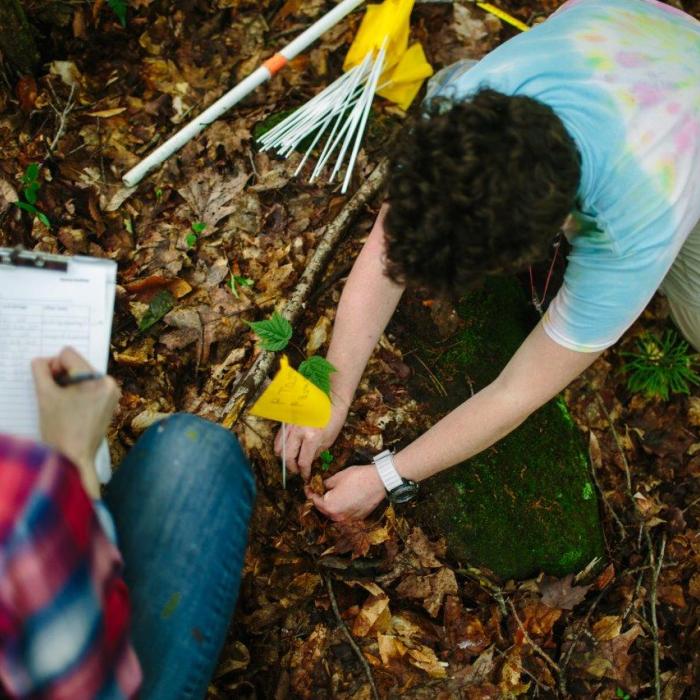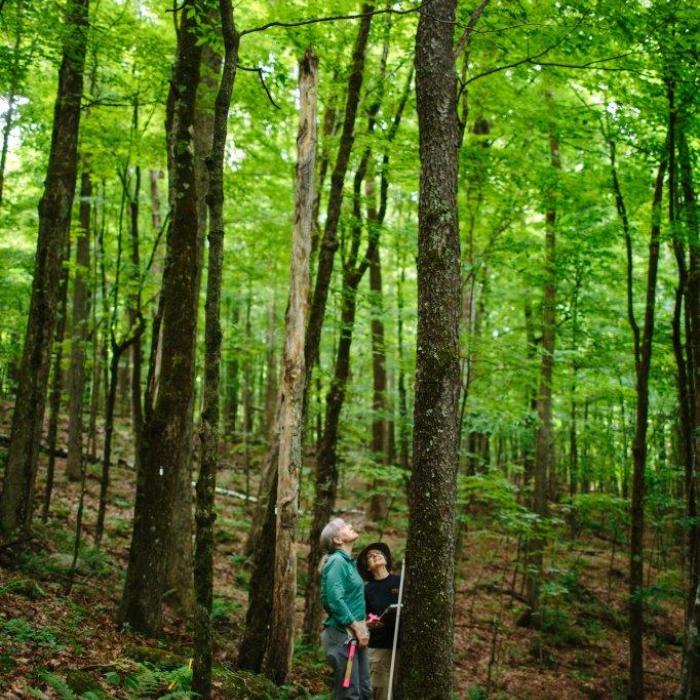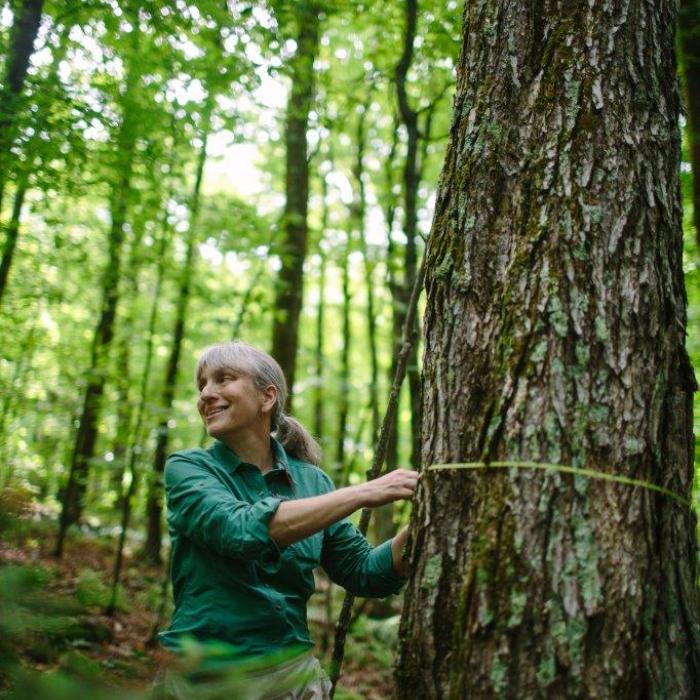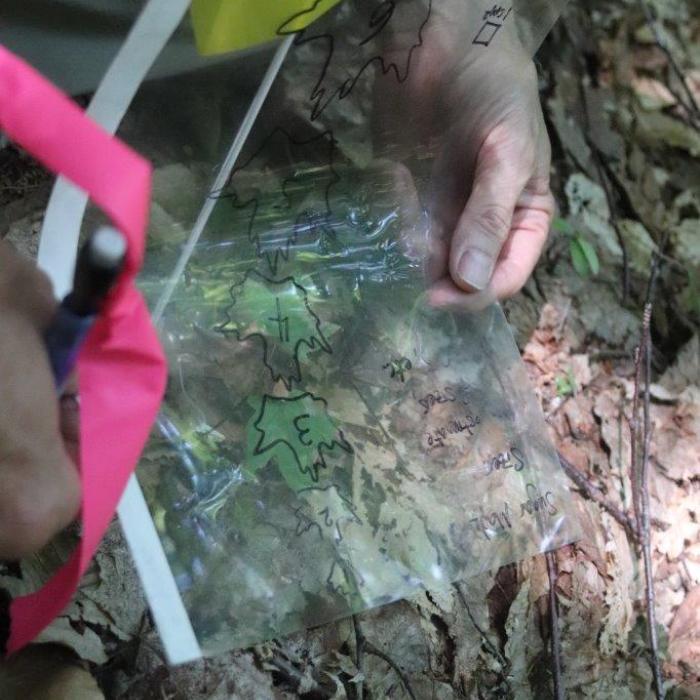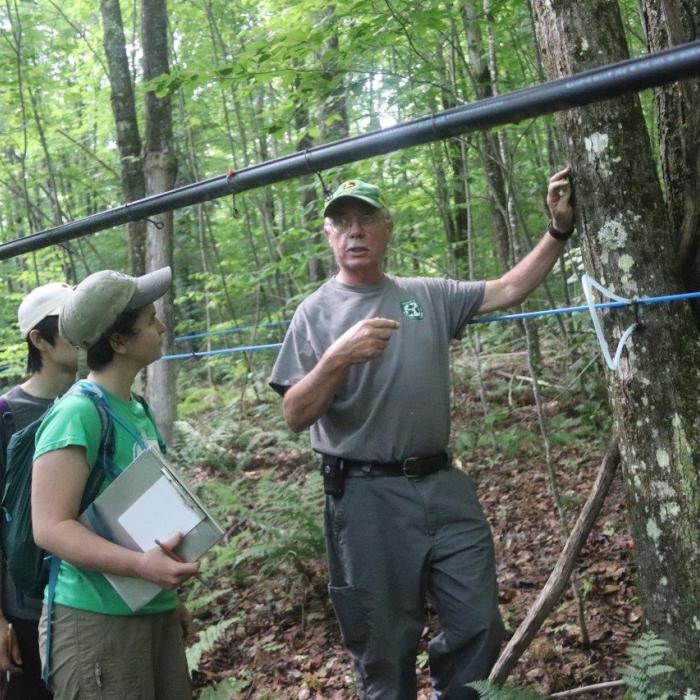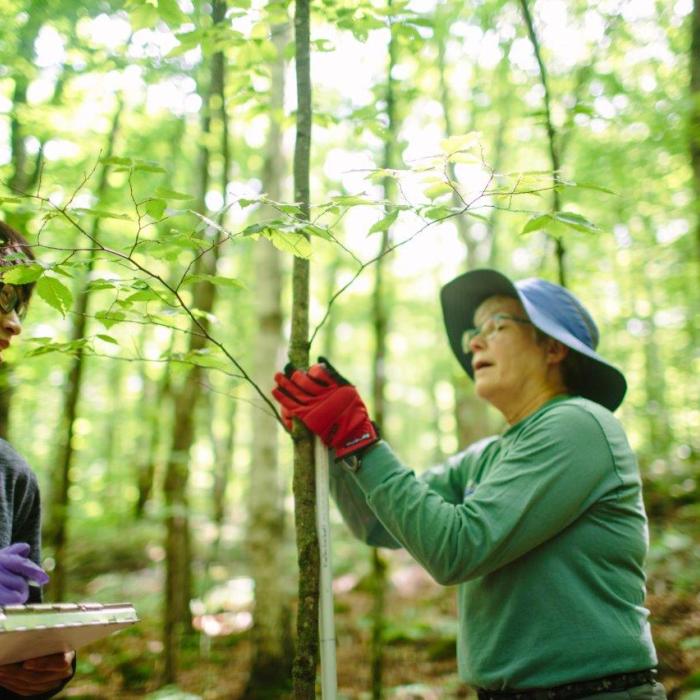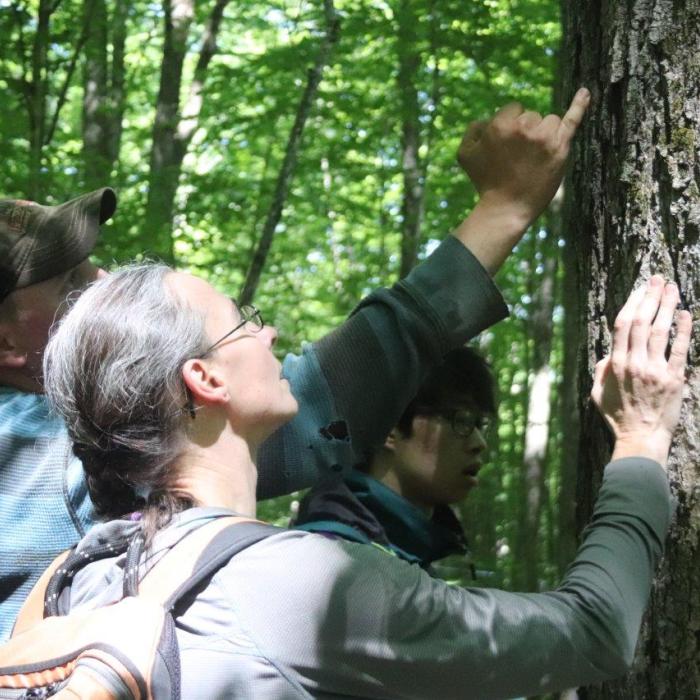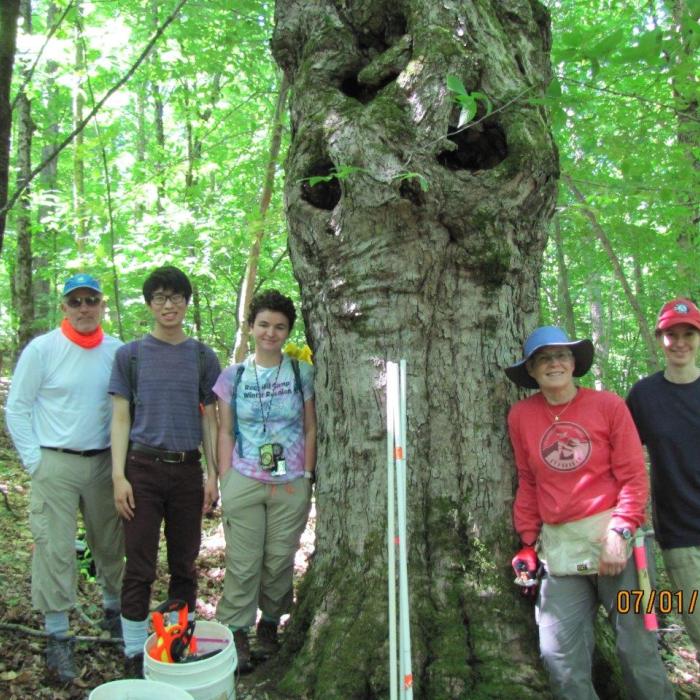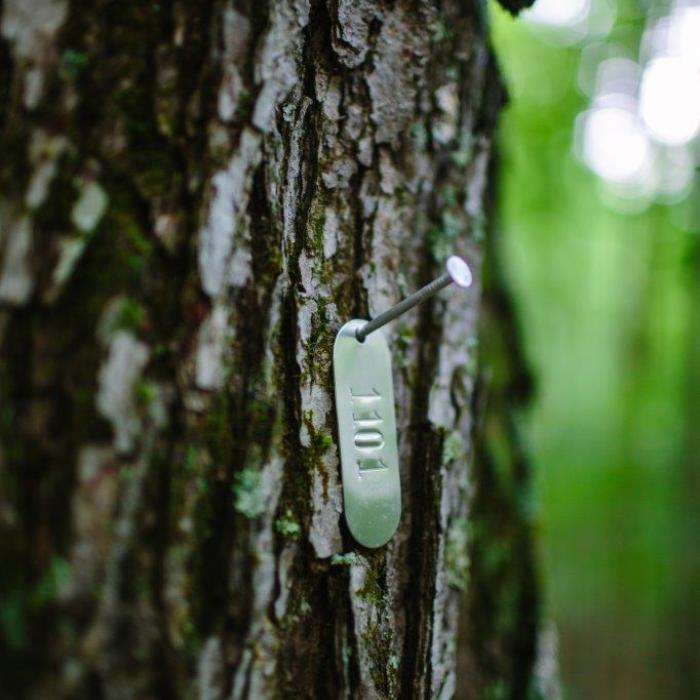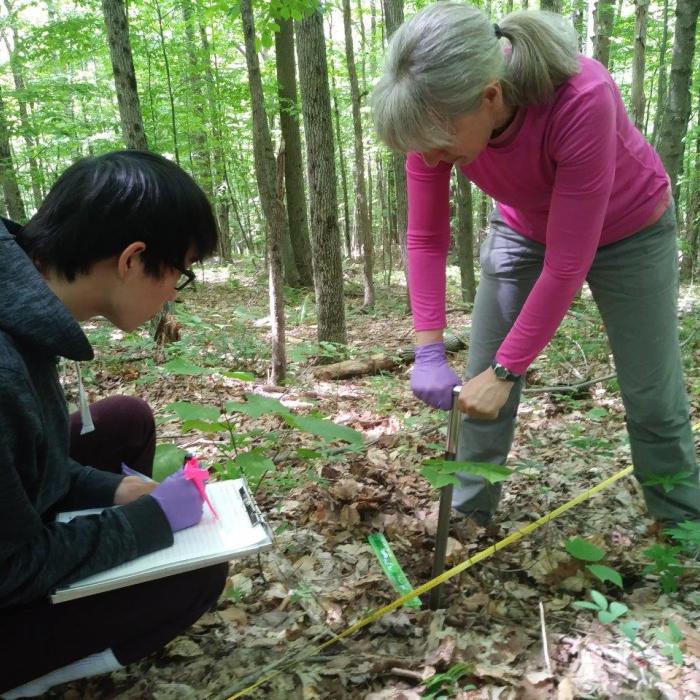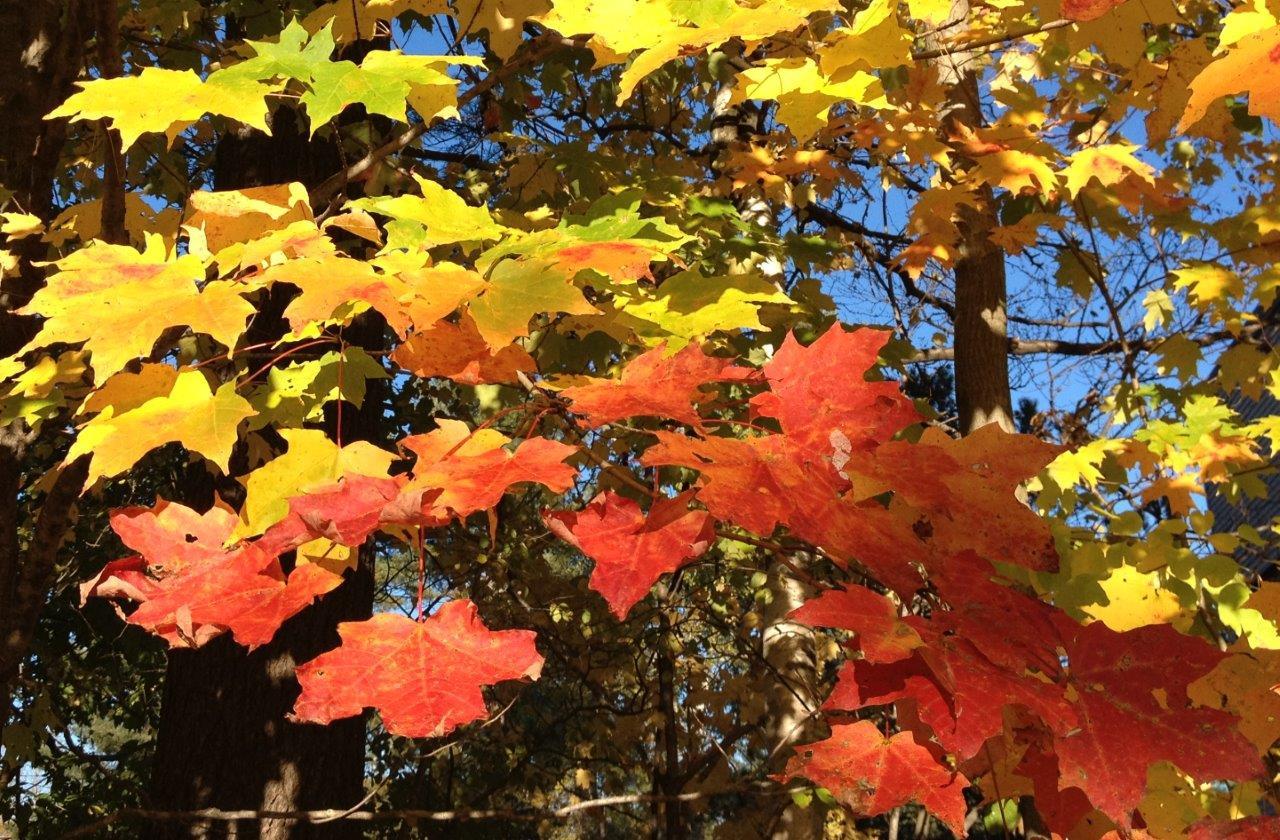
Sugar Maple trees (Acer saccharum) are important to New Hampshire economically, ecologically and culturally. We depend on their blazingly bright foliage to bring in autumn tourist crowds, and their sap supports hundreds of sugarmakers across the state each spring. Sugar maples are a valuable timber species, producing high-end lumber that has many uses, and ecologically, they are an integral component of our northern hardwood forests. Unfortunately, there is some evidence that sugar maples are struggling to maintain their place in our forests. Long term research out of Hubbard Brook Experimental Forest in North Woodstock, NH has documented a failure of sugar maple seedlings to survive. The exact combination of factors leading to this failure is unclear currently, but likely includes increased soil acidification from acid rain, insect and fungal pests, competition with American beech, and climate warming.
The Forest Society is collaborating with Hubbard Brook scientists on a new community science project to determine whether the sugar maple seedling failure documented at Hubbard Brook is occuring on similar northern hardwood forest sites across New Hampshire. Research sites are located on Forest Society reservations and research activities will pair HBEF scientists with Forest Society volunteers to collect data. In Spring 2019, research plots were established at Kauffmann Forest (Stark), Sudrabin Forest (Orange), Yatsevitch Forest (Cornish), and Monadnock Reservation (Dublin), with additional sites to follow in subsequent years.
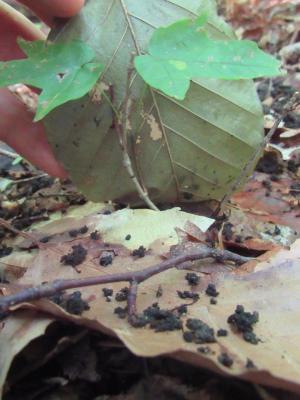
In May 2019, 14 volunteer community scientists were trained to assist Hubbard Brook researchers in establishing study plots and collecting data on tree demography, soil samples and seedling assessment. In this first year of the project, community scientists learned an incredible amount about forest dynamics, tree and seedling identification, using forest science field tools, and the scientific process! To get a better idea of what kind of data we are collecting at study sites, you can read through our Sugar Maple Regeneration Community Science Training Guide. If you are interested in becoming a community scientist volunteer for this project, please contact Carrie Deegan at cdeegan@forestsociety.orgcdeegan@forestsociety.org. We'll be happy to answer any questions you may have about the project and volunteer commitment. More information is available on our volunteer page.
This project has been generously supported by USDA Northeast Climate Hub, the National Science Foundation (Long Term Ecological Research and Public Engagement with Science Grants) and Cornell University (Engaged Cornell Grant).
For more photos from the project, check out the slideshow below.


